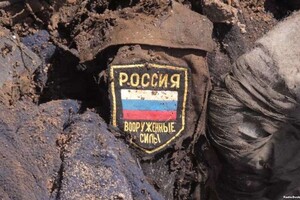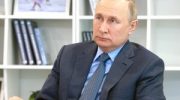In Russia, the bureaucratic system necessary for quick and effective mobilization has been destroyed.

Russian President Vladimir Putin is unlikely to overcome the fundamental structural problems by mobilizing a large number of Russians for the war in Ukraine. The “Partial Mobilization” he announced on September 21st will create additional forces, but they will not be effective and instead will cause heavy internal and social losses. Such conclusions were reached by experts of the American Institute for the Study of War (ISW) in their report on September 25.
“Putin will have to correct the fundamental shortcomings of the Russian military personnel and equipment system if the mobilization is to have any significant value even in the long term. His actions so far suggest that he is far more concerned with getting bodies [mobilized – ed.] to the battlefield than with addressing these fundamental flaws,” the ISW report said.
Since 2008, the armed forces of the Russian Federation have not created conditions for the effective mobilization of reservists, which would enable the rapid mobilization of many people. When most countries, reforming their armed forces, switched to a contract basis, Putin also did it, but at the same time left the conscription, reducing the term of service to 1 year.
Read also: Putin signed amendments that increase punishment for voluntary surrender, refusal to fight
So, in the end, the Russian army switched to a kind of hybrid model that combines conscript soldiers and professional soldiers. And the Russian military has become a mixture of professional volunteer contractors and annual conscripts.
“The prioritization of the formation of professional forces and the deprioritization of military service probably led to the destruction of the bureaucratic structures necessary for mobilization. Mobilization is always a bureaucratically complicated matter. This requires local officials across the country to perform well at a task they may never perform and rarely, if ever, rehearse. Maintaining the bureaucratic infrastructure necessary to carry out a large-scale draft in the reserve requires significant attention from the top management – attention that has probably not been given in Russia for the past 15 years,” American analysts emphasize.
Read also : It is possible that the Russian Federation has decided to mobilize Ukrainian prisoners into its army – ISW
Related video
Recall that the General Staff of the Armed Forces of Ukraine reported on February 25 that the command of Russian units fighting in Ukraine and located in the temporarily occupied territories < strong>automatically extends short-term contracts and does not release its soldiers from the war. Meanwhile, on the sidelines of the Kremlin, they say that the next few days Russia will close its borders and will not let men of military age out of the country.
See special topic: Many Russian mobilized people may not reach Ukraine – expert But this threat should not be neglected. Zelensky was told that the NASAMS systems have not yet arrived in Ukraine Kyiv only received consent to supply the systems. The SBU showed one of the Russian torture chambers in the Kharkiv region From there, Ukrainians were taken to Russia. The occupiers are intensively shelling Toretsk: the hospital and houses were damaged The Russian army shelled the center of Avdiivka with artillery. The President of Finland warned about a dangerous moment in the war, because Putin is a “fighter” Niinisto believes that his Russian colleague wants to finally solve the Ukrainian issue.




